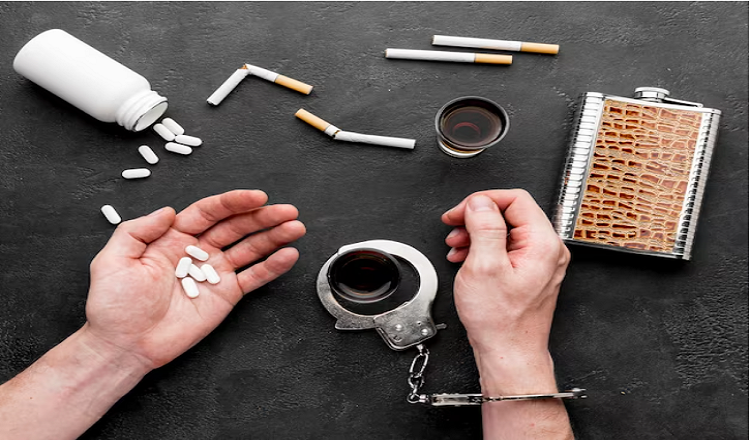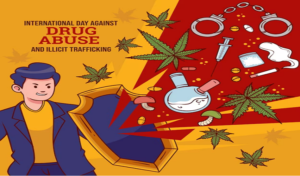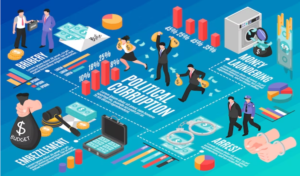The relationship between drug trafficking and organized crime

In the United States, there have been a lot of TV shows, films, and news stories about the link between drug trade and organised crime. And for good reason: drug crime has a huge and far-reaching effect on American society. Drug trafficking is a complicated problem that affects us all, from the opioid crisis to the violence that often goes along with drug-related crimes.
When drugs are made, moved, or sold illegally, this is called drug trafficking. It’s a very profitable business that brings in billions of dollars every year. Organised crime, on the other hand, is when a group of people work together to do illegal things in order to make money. Drug trafficking is a regular thing that organised crime groups do, so these two ideas often overlap.
In this piece, we will talk about the history of drug trafficking and organised crime in the United States, the current state of drug trafficking and how it affects American society, and the ways that law enforcement agencies try to stop this problem. We will also look into the political and social factors that lead to drug trafficking and organised crime, and we will make suggestions for future study and policy changes. So get ready to dive into the murky world of drug trade and organised crime in the United States.
How drug trade and organised crime in the US got started
Drug trafficking and organised crime in the United States can be tracked back to the 19th century, when opium was brought in from China and sold as a pain reliever. Opium use spread quickly, and other drugs like cocaine and marijuana came on the scene soon after. By the beginning of the 20th century, the US government had made it illegal to use or sell these drugs. This made illegal drug trade grow.
Throughout history, drug dealing and organised crime have been linked. Drug trafficking is often used by organised crime groups to make money for their operations. During the 1920s and 1930s, when booze was illegal, groups like the Mafia made a lot of money by smuggling and selling it. In recent years, Mexican drug cartels have become major players in the US drug trafficking business. They control much of the production and distribution of drugs like cocaine, heroin, and methamphetamine.
Organised crime groups have also been known to use violence and threats to keep control of the drug trade. This is shown by the fact that drug-related gang violence is getting worse in places like Los Angeles and Chicago, where gangs have been known to fight turf wars over where to sell drugs. Drug trafficking and organised crime have been linked for a long time, and both businesses are still doing well in the United States today.
How drug trade and organised crime are right now in the US
There is still a big problem with drug trafficking and organised crime in the United States. About 10% of Americans use illegal drugs on a daily basis. The Drug Enforcement Administration (DEA) says that Mexican drug gangs are the main source of drug trafficking in the US. Most drugs like cocaine, heroin, and methamphetamine are brought into the country by sneaking them across the southern border.
Organised crime groups are still a big part of drug dealing today, and many of them use the money they make from selling drugs to pay for other illegal activities. Most of the time, these groups work in a very well-organized way, with complex distribution networks and the ability to bribe officials and scare away witnesses.
Drug trafficking has a big effect on the US economy and society. The cost of healthcare, law enforcement, and lost productivity because of drugs is believed to be in the hundreds of billions of dollars per year. Even worse, drug use causes many social problems, such as addiction, crime, and the breakup of families, which are all very sad. Even though police are trying to stop drug trafficking and organised crime, the problem still exists. This shows that more study and help are needed in this area.
Violence and drug dealing go hand in hand.
Violence in the United States is often tied to drug trafficking and organised crime. This is because drug trafficking is a very profitable business, and fights can break out between rival groups over area and market share. Also, crimes like robbery and burglary that are linked to drugs can also lead to violence.
Violence caused by drugs can have terrible effects on communities, and harmless people are often caught in the crossfire. Children who grow up in places where there is a lot of violence are also more likely to experience stress and have mental health problems as adults. Violence caused by drugs can also cause fear and mistrust in communities, which can lead to social breakdown and more crime.
The crack outbreak of the 1980s is an example of how drug trafficking has led to more violent crime in cities. More lately, the rise of synthetic opioids like fentanyl has led to more drug-related deaths and violence as drug cartels fight for control of this lucrative market. Getting rid of violent crime and making neighbourhoods safer, we need to do something about drug trafficking and organised crime.
How law enforcement works to stop drug dealing and organised crime
Law enforcement organisations are very important in the United States when it comes to stopping drug trafficking and organised crime. They use many different methods, such as targeted investigations, undercover operations, and working with foreign partners, to stop drug trafficking networks and break up organised crime groups. Agencies also try to find and prosecute high-level criminals and help communities that have been hurt by violence linked to drugs.
It can be hard to tell how well these tactics work because drug trafficking and organised crime are complicated problems that often involve more than one country or jurisdiction. Some tactics may work right away, but for long-term success, it is often necessary to work hard and work with other groups.
When trying to stop drug trade and organised crime, law enforcement has to deal with limited resources, corruption, and the fact that these criminal networks are always changing. Also, drug trafficking and organised crime are often linked to other problems, like poverty and social inequality. To solve these problems, we need a complete and multifaceted approach.
The political and social things that make drug trade and organised crime possible
There are a number of political and social reasons in the United States that make the country a good place for drug trafficking and organised crime. Poverty and social inequality can make people want to use drugs, and people who live in poor areas may be more likely to get involved in drug trade or organised crime to make money. Corruption among police and government officials can also help drug trafficking and organised crime by giving them safety and making it harder for police to do their jobs.
To deal with these problems, policies and measures can be put in place to help the economy grow, lower poverty, and make things more fair. Also, fighting corruption and making law enforcement stronger can help break up criminal networks and make drug dealing and organised crime less harmful. Education and prevention programmes can also help reduce the demand for drugs and support healthy alternatives. Overall, it is important to deal with the political and social issues that lead to drug trade and organised crime if we want to lessen the damage they do to communities.
Conclusion
In the end, drug trade and organised crime are both complicated problems that affect the United States in big ways. This article has talked about the history and present state of drug trafficking and organised crime, as well as their links to violence, the role of law enforcement in stopping them, and the political and social factors that make them so common.
To come up with effective policies to stop drug trade and organised crime, it is important to know how they are connected. This means fixing the underlying social and economic problems, making law enforcement stronger, and getting more countries to work together.
Future study can also help us learn more about these problems and find better ways to stop criminal networks and deal with the causes of drug trafficking and organised crime.
In the end, getting rid of drug trafficking and organised crime is the only way to make neighbourhoods in the United States safer and more fair. Policymakers, law officials, and researchers must keep working together to find ways to deal with these problems and protect the health and safety of all Americans.
Read More You May Like:








